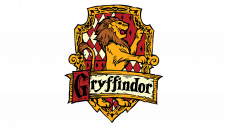AOL Logo
AOL stands for America Online. Steve Case, Jim Kimsey, and Marc Seriff founded it. They established AOL in Virginia, USA. Initially, its purpose was to provide an online service, including email and internet access. It became famous for its user-friendly interface and the iconic “You’ve got mail” greeting. AOL aimed to connect people in an age when the internet was just emerging into public consciousness. It offered various services, such as news, weather, sports, and chat rooms, making the online world more accessible to everyone.
Meaning and history
AOL’s journey began on May 24, 1985. Initially, it wasn’t the giant we know today. It started as Control Video Corporation, focusing on online video game services. By the 1990s, AOL had transformed into a major internet service provider, peaking in the early 2000s with millions of subscribers worldwide. A significant date in AOL’s history is January 10, 2000, when AOL announced a merger with Time Warner, a massive media conglomerate. This deal marked one of the largest mergers in business history, signifying the internet’s growing influence on traditional media. However, the merger faced challenges and didn’t bring the expected success, leading to a split in 2009. Despite the ups and downs, AOL remains a notable part of internet history.
What is AOL?
AOL is a digital media company that once dominated the early internet landscape as a gateway to the web. It provided millions with their first internet experience, offering services like email, web browsing, and a variety of content. AOL operates as a content provider, offering news, entertainment, and services under various brands.
1983 – 1985
The logo presents a bold monochrome design featuring the name “Control Video Corporation”. The letters are stylized with horizontal lines, creating an optical illusion. This design choice suggests movement and digital connectivity, embodying the brand’s focus on video and technology. The typography is straightforward, ensuring readability while adding a futuristic touch. Overall, the logo captures the essence of a company rooted in the pioneering days of online video gaming.
1985 – 1989
This logo radiates a playful digital vibe, showcasing the word “Quantum” in a spectrum of pixelated colors. Each letter transitions through a gradient, reminiscent of early computer graphics. The use of 8-bit style typography nods to retro gaming and computing from the 1980s. It contrasts with the previous logo’s strict monochrome by infusing vibrancy and a more relaxed, approachable atmosphere. This design suggests innovation and a forward-thinking attitude, reflecting a company at the intersection of technology and creativity. The logo’s evolution marks a shift towards a more dynamic and colorful brand identity.
1989 – 1991
This logo signifies a mature evolution, adopting an elegant and stylized approach. The “America Online” script flows with a sophisticated cursive, evoking a sense of accessibility and friendliness. Above, a triangular motif with an abstract swirl symbolizes connectivity and dynamism. The design departs from the previous pixelated look, opting for smooth lines and a refined color palette of muted browns and purples. This change reflects a brand growing more polished and established, aspiring to convey reliability and a premium online experience. The logo’s transformation from playful to professional marks AOL’s ambition to be taken seriously in the expanding digital world.
1991 – 2004
The logo has shifted to a crisp monochrome, embracing a classic navy blue. The cursive script for “America Online” remains, but now it’s more streamlined and pronounced. The triangular symbol above is more defined, and the eye motif within it is sharper, conveying vision and insight. This iteration simplifies the color scheme, potentially to reinforce brand recognition and to maintain a professional image. The design’s evolution from a dual-tone to a single color highlights a strategic move towards a cleaner and more unified corporate identity. This change suggests a company that has solidified its presence in the digital arena and is poised for growth.
1996 – 2004
The logo has undergone a significant streamlining, with “AOL” now in bold block letters, shedding the cursive style. The iconic triangle and swirling eye retain their positions, but the design is markedly more geometric. Navy blue remains the color of choice, emphasizing stability and trust. This iteration strips away any additional text, presenting a concise and robust brand identity. The change points to a company confident in its place in the digital world, needing only three letters to be recognized. The updated logo reflects a modern, efficient, and technology-focused AOL, in line with the internet boom of the 1990s.
2004 – 2009
In this logo, AOL embraces a cleaner, more contemporary design. The typography is solid, bold, and sans-serif, symbolizing a modern and straightforward approach. The triangle evolves into a circular arrow, pointing rightwards, suggesting forward movement and progress. This arrow also subtly hints at a play button, resonating with the digital era’s focus on media and action. The color palette remains a confident navy blue, yet the overall feel is fresher and more aligned with the early 2000’s aesthetic. The simplification of forms reflects AOL’s adaptation to the rapidly changing digital landscape and its users’ preferences for sleek, minimalist designs.
2009
The logo presents a gradient of blues, giving it a dynamic and modern feel. “AOL” appears in a sans-serif font, bold and clear. Next to the text, a stylized arrow circles back on itself, symbolizing progress and perpetual motion. This arrow could also be seen as a play button, echoing the digital media era. The design’s gradient suggests depth and dimension, possibly representing the brand’s expansive reach in the virtual realm. The transition from darker to lighter shades of blue could imply innovation and forward-thinking. Overall, the logo marries simplicity with contemporary design elements, aiming to remain relevant in a fast-paced digital age.
2009 – 2024
AOL’s logo has made a bold shift to minimalism. The design now features stark black lettering on a white background. The typeface is sans-serif, with the ‘O’ stylized as a perfect circle, matching the full stop that punctuates the acronym. This departure from the blue color palette to pure black and white suggests a return to basics, emphasizing clarity and simplicity. The addition of the period signifies finality and may represent the brand’s completion of a transformation or an evolution of its identity. The logo’s substantial contrast and reduced elements convey a modern, clean aesthetic, suitable for the digital age.
2024 – Today
In 2024 the AOL logo got even more laconic: the dot from the end of the line was removed, while the main part of the concept, the lettering, got a new style and weight. The black title case inscription was replaced by a massive and stable uppercase lettering in a bold sans-serif typeface with the softened angles and contours of the stable characters, yet the straight square cuts of the bars.




















